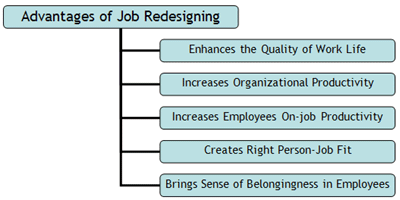Advantages and Disadvantages of Job Analysis
April 3, 2025
 Advantages and Disadvantages of Job Analysis
Advantages and Disadvantages of Job Analysis
Though job analysis plays a vital role in all other human related activities but every process that has human interventions also suffers from some limitations. The process of job analysis also has its own constraints. So, let us discuss the advantages and disadvantages of job analysis process at length. Advantages of Job Analysis Provides First…
 Approaches to Job Design
Approaches to Job Design
Job design is the next step after job analysis that aims at outlining, and organizing tasks and responsibilities associated with a certain job. It integrates job responsibilities and qualifications or skills that are required to perform the same. There are various methods or approaches to do this. The important ones are discussed below Human Approach…
 Benefits of Job Rotation
Benefits of Job Rotation
Job rotation is considered as an effective tool for successful implementation of HR strategy. It is about settling employees at the right place where they can deliver the maximum results. In today’s highly competitive world, this can be proved as the best strategy to find the immediate replacement of a high-worth employee from within the…
Restructuring the elements including tasks, duties and responsibilities of a specific job in order to make it more encouraging and inspiring for the employees or workers is known as job redesigning.
The process includes revising, analyzing, altering, reforming and reshuffling the job-related content and dimensions to increase the variety of assignments and functions to motivate employees and make them feel as an important asset of the organization.
The main objective of conducting job redesigning is to place the right person at the right job and get the maximum output while increasing their level of satisfaction.


Therefore, the purpose of job redesigning is to identify the task significance and skill variety available in the organization and reallocating the job-related tasks and responsibilities according to the specific skills possessed by an employee.
Your email address will not be published. Required fields are marked *